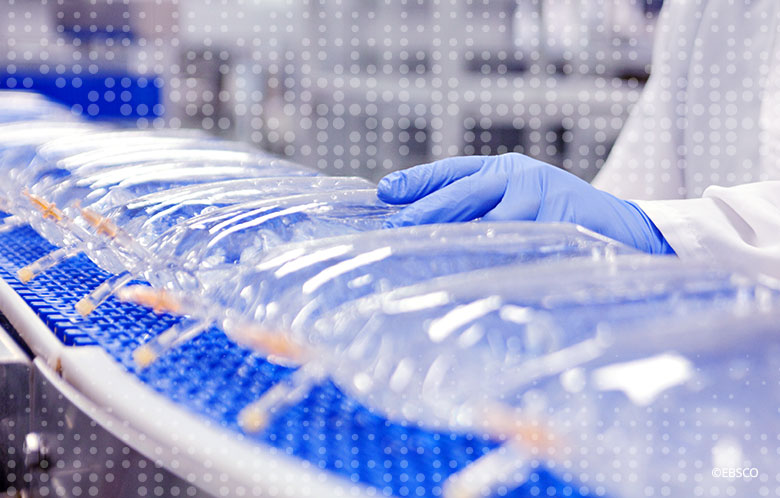Hurricane Helene was by far the deadliest inland hurricane in U.S. history, and the collateral damage extends far beyond those directly impacted. Floods ravaged the production facilities at the Baxter plant in North Carolina, which supplies 60 percent of the intravenous (IV) fluids and peritoneal dialysis (PD) solutions in the U.S. Current predictions by the company are a 60 percent return to production by the end of 2024. Considering that intravenous fluids (IV fluids) are the most commonly prescribed drugs in hospitals, U.S. healthcare providers are forced to be much more intentional when considering indications for IV fluids, choice of solution, and duration of use.
Recommendations to conserve and replace IV fluids and PD solutions are widespread, with an emphasis on prioritizing use for critical patients and replacing IV fluids with something else such as oral hydration or colloid solutions when appropriate. We thought some of our readers might be wondering exactly how to ‘conserve and replace’, so here is a brief Q/A from our review of available evidence and guidance from professional organizations.
What products are affected by the shortage?
- Dextrose IV solution
- Lactated ringer IV solution
- Peritoneal dialysis solution
- Sodium chloride (normal saline) IV solution
- Sodium chloride for irrigation
- Sterile water for irrigation
- Sterile water for injection
For which common conditions is oral rehydration recommended over IV fluids?
Assuming the patient is not vomiting, critically-ill, or with altered mental status, oral rehydration is recommended over IV fluids for a variety of conditions including:
- Mild-to-moderate dehydration
- Acute diarrhea
- Heat-related illnesses, excluding heat stroke
- Post-operative recovery
- Urinary tract infections and mild pyelonephritis
- Nephrolithiasis
- Community-acquired pneumonia
For what conditions is oral rehydration not a good option?
Sometimes gut absorption of fluids is not as safe or effective as IV administration. Patients with tenuous volume status or electrolyte imbalance may be at risk if rehydration is attempted orally. Other conditions for which oral rehydration is not recommended include:
- Severe dehydration, especially with hypovolemic shock or severe electrolyte imbalances
- Bowel obstruction
- Altered mental status
- Severe burns
- Hemodynamic instability
- Heat stroke
- Diabetic ketoacidosis
- Intractable vomiting
- Post-surgical ileus
What is the best oral rehydration therapy for adults and adolescents with acute diarrhea?
While the Infectious Diseases Society of America (IDSA) recommends commercially available oral rehydration solutions like Pedialyte for adults and adolescents due to the reduced-osmolarity composition, the American College of Gastroenterology (ACG) suggests reserving Pedialyte for older patients with severe diarrhea and offering water, fruit juices, sports drinks, and soups for otherwise healthy(ish) adults and adolescents.
What is the best oral rehydration therapy for infants and children with acute diarrhea?
The IDSA would still recommend Pedialyte as first-line, but a randomized noninferiority study in Canada showed that apple juice diluted 1:1 in water had the least treatment failure in children compared to sports drinks, tea, or commercial products like Pedialyte, probably due to tolerability.
What are some basic interventions to conserve IV fluids?
- Review order sets that include maintenance fluids before signing them. If the patient is not critically ill, does not have altered consciousness, has a functional GI system, and can tolerate oral hydration, reconsider use of IV fluids.
- (More) carefully assess for signs of severe dehydration when patients present for care. Conserve IV fluids for those with severe dehydration and encourage oral rehydration whenever possible for the rest.
- Use Enhanced Recovery After Surgery (ERAS) protocols for postoperative patients whenever possible and appropriate. These include early oral hydration.
- For patients who do require IV fluid boluses or maintenance fluids, be mindful about when the indication for IV fluids is no longer present and stop the IV fluids and/or move to oral rehydration.
- Consider not hanging bags of IV fluids for operative cases on small children with anticipated case durations of less than one hour.
- Intraoperatively, consider using IV pushes or flushes instead of bags of fluid when possible.
If basic measures to conserve IV fluids aren’t enough based on the existing and anticipated supply, what else can be done to conserve IV fluids?
- Consider placing a nasogastric (NG) tube for patients with functioning GI tracts who need fluid repletion rather than giving IV fluids. While placing an NG tube is not without risk, oral absorption of fluids can be better on the body than IV administration for some patients with prolonged vomiting or diarrhea, post-operative patients who are still sedated, or even patients with upper GI bleeds.
- Hospitals may have to continue to postpone or cancel elective operative cases, especially ones that require significant irrigation.
- Since heat-related illnesses are a common indication for IV fluids, athletic events that put people at higher risk for heat stroke may need to be postponed or canceled.
If IV administration is necessary, what are safe and effective alternatives for the fluids that are in short supply?
We can safely use colloid solutions rather than crystalloid solutions for critically-ill patients without traumatic brain injury.
Under normal circumstances, use of colloid in place of crystalloid solutions is not recommended for non-critical patients due to risk of acute kidney injury, coagulopathy, allergic reactions, and increased cost. However, if necessary crystalloid IV solutions are not available, the administration of colloid solutions for non-critical hospitalized patients may have to be considered.
Remind me, what’s the difference between crystalloid and colloid solutions?
Crystalloid solutions contain electrolytes, minerals, or other small molecular-weight water soluble substances that approximate the osmolarity and/or electrolyte concentration of plasma. Colloid solutions contain much higher molecular-weight particles like proteins that allow them to remain in the intravascular space for longer than crystalloid solutions. Crystalloid solutions are generally cheaper and more readily available than colloid ones, and are very helpful for rapid volume replenishment and the correction of electrolyte disturbances.
What are some examples of crystalloid and colloid solutions?
Common isotonic crystalloid solutions are sodium chloride 0.9 percent (normal saline) and 5 percent dextrose in water (DW5). Balanced crystalloid solutions include Lactated ringer’s (LR), Plasma-Lyte, and Sterofundin. The difference between isotonic and balanced crystalloids is that while both contain electrolyte compositions that aim to match plasma osmolarity, balanced crystalloids have a more physiologic electrolyte composition.
Common colloid solutions (also known as plasma expanders) include albumin, dextran, Hespan and hydroxyethyl starch (HES). Colloid solutions are not affected by the shortage.
Are colloid solutions safe to use in place of crystalloids for critically-ill patients?
The short answer is yes, except in cases of traumatic brain injury. Data from the SAFE Study demonstrated lower mortality for critically-ill patients who received colloid compared to crystalloid solutions, with the exception of patients with traumatic brain injury who had higher mortality when colloid solutions were used.
What is in peritoneal dialysis (PD) fluid?
PD solutions contain sodium, chloride, calcium, and magnesium, dextrose (D-glucose) as an osmolyte, and lactate as a buffer.
What should we do to preserve the supply of PD solutions?
First, make sure that the PD catheter is functioning to provide optimal flow. If changes are needed, consider increasing dwell times rather than adding more bags. In addition, patients can be transitioned to continuous PD rather than nightly automated PD, as continuous PD uses less fluid.
Should peritoneal dialysis patients be transitioned to hemodialysis (HD) in order to conserve PD solutions?
No. Providers should avoid transitioning patients getting PD to HD as much as possible. This should only be done if the PD solution supply is insufficient to provide adequate PD.
What is being done to replenish supply?
The Baxter plant announced that many employees are helping with the cleanup efforts and that they anticipate a 60 percent production rate by the end of the year. In addition, the FDA issued a temporary policy on compounding and approved the use of IV fluids from outsourced facilities as well as extending beyond use dates by four-22 days, depending on processing and storage temps.
For more information about specific indications, visit these DynaMedex topics:



